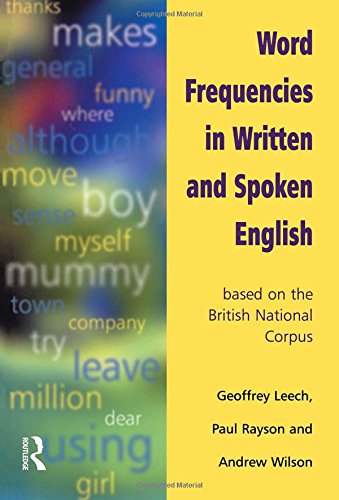

Most ebook files are in PDF format, so you can easily read them using various software such as Foxit Reader or directly on the Google Chrome browser.
Some ebook files are released by publishers in other formats such as .awz, .mobi, .epub, .fb2, etc. You may need to install specific software to read these formats on mobile/PC, such as Calibre.
Please read the tutorial at this link. https://ebooknice.com/page/post?id=faq
We offer FREE conversion to the popular formats you request; however, this may take some time. Therefore, right after payment, please email us, and we will try to provide the service as quickly as possible.
For some exceptional file formats or broken links (if any), please refrain from opening any disputes. Instead, email us first, and we will try to assist within a maximum of 6 hours.
EbookNice Team

Status:
Available4.4
16 reviewsWord Frequencies in Written and Spoken English is a landmark volume in the development of vocabulary frequency studies. Whereas previous books have in general given frequency information about the written language only, this book provides information on both speech and writing. It not only gives information about the language as a whole, but also about the differences between spoken and written English, and between different spoken and written varieties of the language. The frequencies are derived from a wide ranging and up-to-date corpus of English: the British National Corpus, which was compiled from over 4,000 written texts and spoken transcriptions representing the present day language in the UK. The book is based on a new version of the corpus (available from 2001) providing more accurate grammatical information, which is essential (for example) for distinguishing words like leaves (noun) and leaves (verb) with different meanings. The book begins with a general introduction, explaining why such information is important and highlighting interesting linguistic findings that emerge from the statistical analysis of the British National Corpus vocabulary. It also contains twenty four 'interest boxes' which highlight and comment on different aspects of frequency - for example, the most common colour words in English in order of frequency, and a comparison of male words (e.g. man) and female words (e.g. woman) in terms of their frequency.